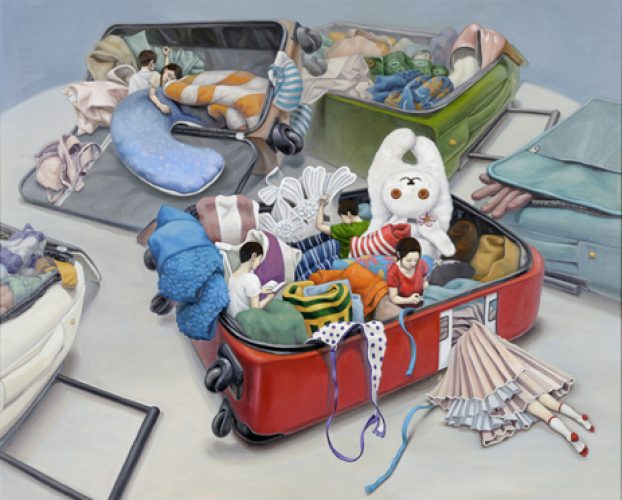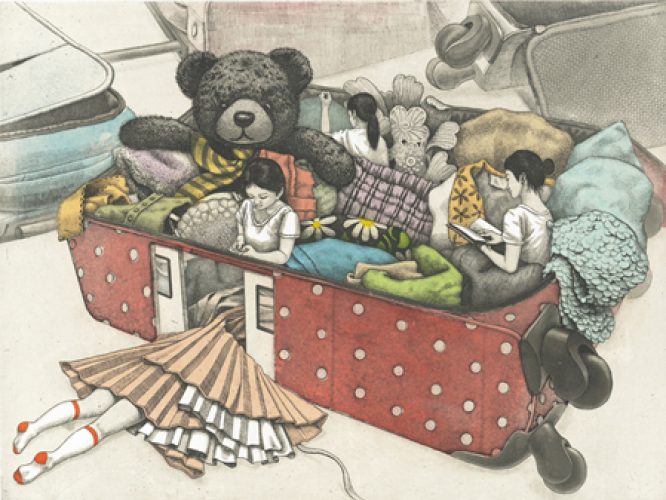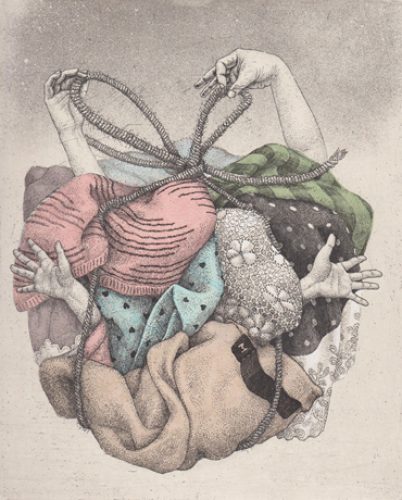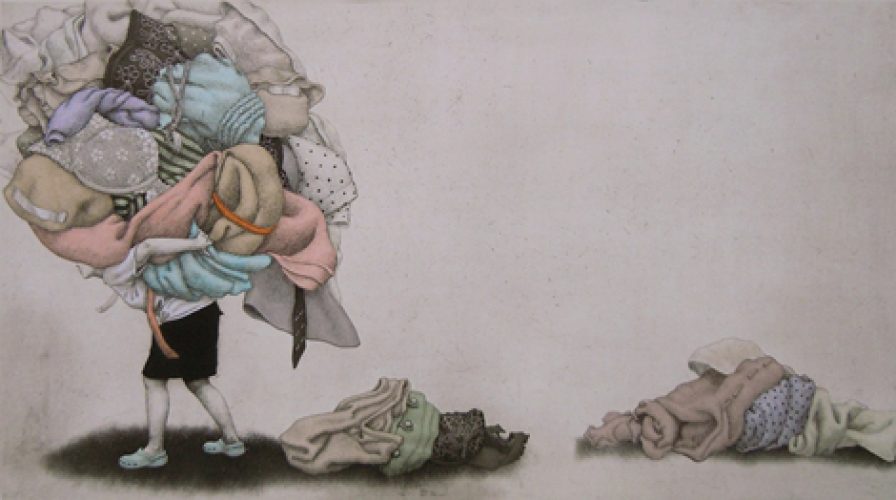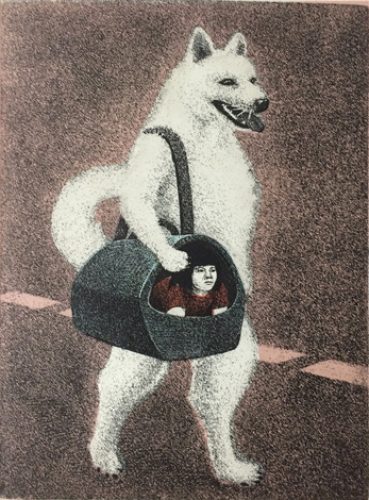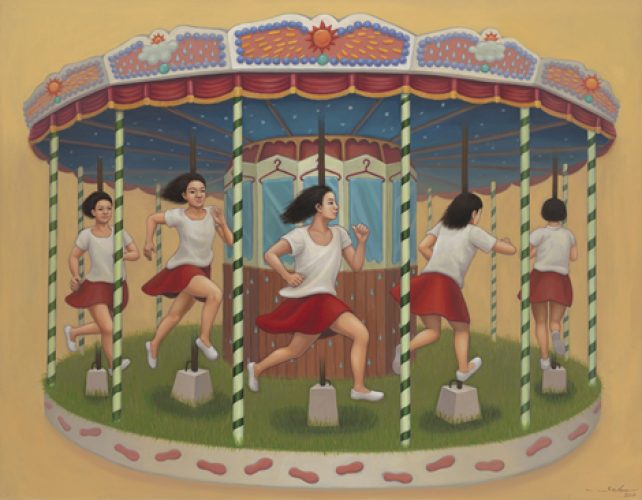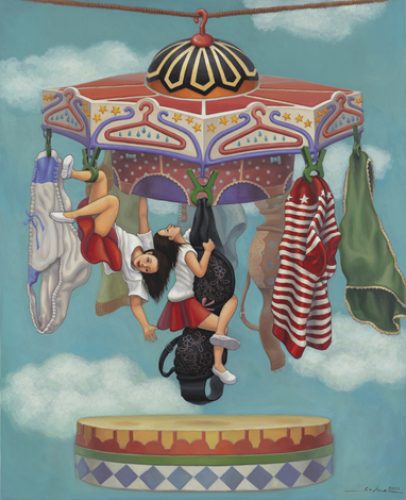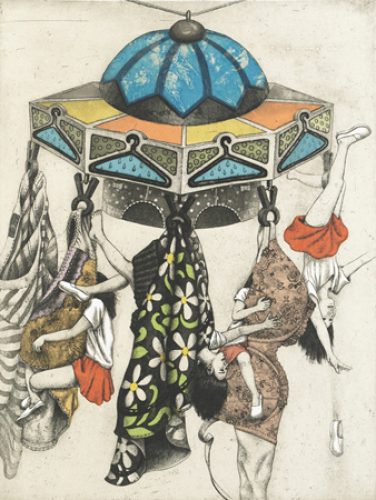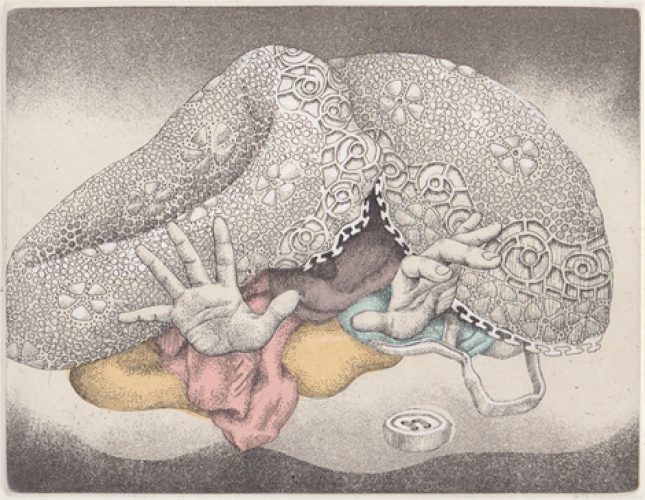The Soft Absurdity
In that her artworks possess a distinguished image of their own, Kim Sohee is an artist salient in the eye of the viewer. Through the needle she commands over bronze, Kim aims to depict the desperate realities of everyday life- the image that instinctively occurs from her fingertips exudes, in her own words, ‘a scent of laughter that (for some reason) cannot be fully explained’.
Her work stems from the question ‘Why and what is it that causes us to laugh?’ Even the most instinctive and spontaneous form of laughter, says Kim, is rational. Again in her own words, ‘We are already aware of the fact that the elements comprising laughter are neither particularly solemn, like the ātma-saṃjñā(notion of one-self, Buddhist terms), nor preciously hidden above in the heavens. Rather, they remain implicit in our everyday lives…… I’d like to keep it clear that the meaning of laughter(humor) should not be limited to merely the act of laughing out loud, but a compilation of heart-tickling sentiments and our perceptions of the queer phenomena surrounding ourselves.’-this is the basic stance of Kim Sohee, a possessor of surely the most keen sensibility.
What was most interesting the first time I looked upon her works was that Kim’s insights on the mechanism of laughter and her satirical portrayals of society were molded very subtly into her works. One of her works, displaying plump and overweight high school girls due to an excessive amount of exam stress and lack of exercise packed up in an egg box, would be an appropriately humorous example. One would see it as harsh criticism or sarcasm on the national college entry system, but another would say it rather lacks poignancy to be classified as full-fledged social satire. Because she even took to mentioning Claude Serre, a poignant satirical artist of modern France, in her thesis, I couldn’t help myself from thinking that a more acute form of satire on this situation should have taken place.
But Kim has a decent explanation on this matter. She concludes that the laughter she wishes to depict is ‘the power to transcend reality by objectively reflecting on one’s own absurdities.’ Every nook and cranny of the real world is indeed full of absurdities-there’s no room for objections in this argument, for sure.
But the point of discussion here is not the logic involved, but how complete it is as a piece of art. Just as her teacher, Watanabe Tatsumasa acclaims, Kim is an artist who opens up new realms of printing with her own style of etching. Though her works in print are praiseworthy, it would seem unfair to label her solely as a print artist. Her paintings are also worthy of note in that they carry a unique flavor derived from print. A fitting example from this exhibit can be found in comparing the soft, delicately engraved etchings and [Way Home], a work comprised of two smooth, glossy oil paintings. The comparison is an incredibly sensuous one, bringing joy to any pair of eyes that sets sight upon the two works.
But let us leave that point behind for another day; it is time we bring the focus of debate closer in on her actual works. To what extent do her carrier bags manage to portray the ‘absurdities’ in the life of modern day man’? What about in [Interruption], where a young woman on her knees seems to be sticking her head between coats at the dry cleaner’s? Should these coats be taken for nothing more than what they appear to be? In that case, could they not be seen as different forms of numerous pedestrians? What’s clear to say for this piece of art is that the ‘laughter’ involved has long gone, leaving behind only the vague impression of an odd riddle. Likewise, one cannot unilaterally conclude that [Merry Go Round], where young women spin around hanging from a merry go round, draws solely on the cold-heartedness of human existence and fate. Everything is far too silent, far too calm for that. Her series of works with figures pushing their heads into darkness furthers this discussion. Could they not be symbolizing the introverted actions of modern day man, who constantly avoids confrontation with society?
The most interesting and delightful piece in this exhibition would certainly be the [My Pet] series, where the roles of pet and owner are reversed. It’s the kind that draws quite a few chuckles from the audience without their own noticing. Some will even take the time to self-criticize. Both pet and owner are trapped in some kind of absurdity, though it may not be a particularly severe one. One may question himself on whether it is a pet that I own, or a pet that I serve. As far as I know, there is no such artist equivalent to Kim Sohee when it comes to expressing such contradictory relationships in such a tender, elegant way. Kim Sohee is an artist who draws on absurdities- gentle absurdities, to say.
Motoe Kunio

